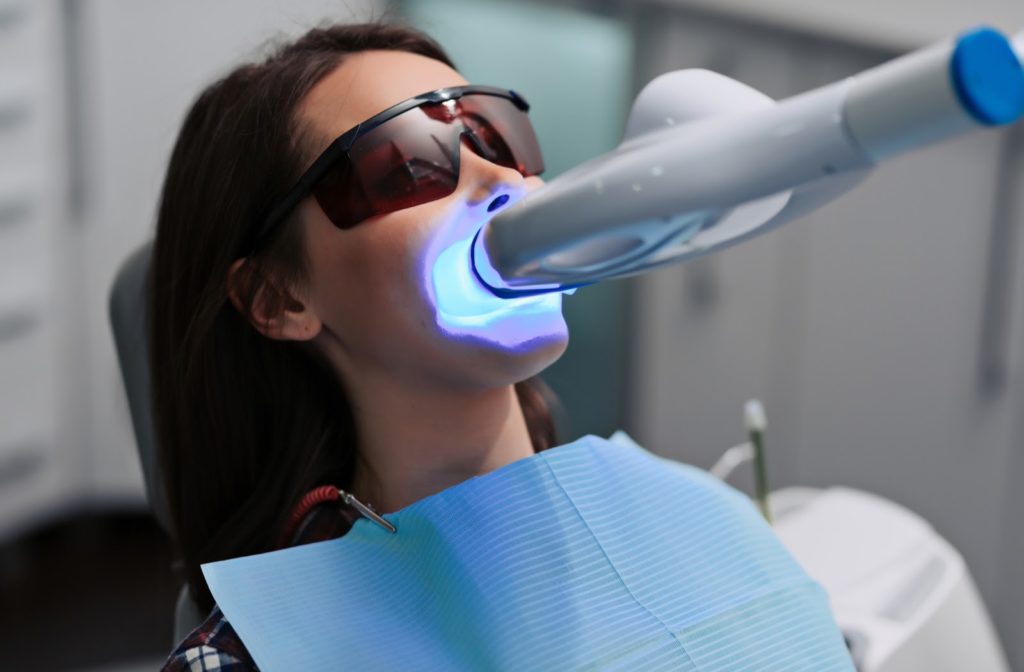Teeth whitening has become a common practice for people looking to enhance their natural colour or create a brighter smile. Modern dentistry offers a few different methods for whitening your teeth, from in-office treatments to at-home applications.
Many people question if teeth whitening is safe. Under the supervision of a dentist, teeth whitening is considered a very safe procedure. Whitening your teeth at home is also very safe if dentist and product guidelines are followed. Understanding the procedures and side effects is the best way to whiten your teeth safely and with great results.
When Should I Get My Teeth Whitened?
A discussion with your dentist will help in determining if you are a candidate for teeth whitening. The health of your teeth, any dental restorations on your front teeth and certain general health factors may influence whether teeth whitening is an option for you. The source of your tooth discolouration is also an important consideration as not all teeth will whiten easily. Your dentist may suggest specific treatments depending on your health, budget, and desired speed of results.
Extrinsic Discolouration
This type of discoloration is the result of foreign substances that influence the colour of your teeth (usually after extended or repetitive contact). This staining can be a side effect of eating, drinking, or smoking certain items. Here are some common substances that can stain your teeth:
- Coffee
- Tea
- Red wine
- Berries
- Cola
- Tobacco
Intrinsic Discolouration
Intrinsic discolouration stems from several factors including medication, illness, infection, trauma, and ageing. This type of discolouration is within the tooth and requires more extensive whitening to get results. Over-the-counter whitening toothpaste won’t usually help brighten your teeth if you have intrinsic discoloration.

Teeth Whitening Methods
Always consult with your dentist for guidance on the whitening techniques that are safest for you. Teeth whitening methods generally fall into 3 categories: in-office treatments, dentist-provided at-home treatments, and over-the-counter products.
Professional In-Office Whitening
The safest and most reliable method of teeth whitening is under the supervision of a dentist at a professional clinic. The major benefit of this type of whitening is how fast it works. Results are often seen after just one treatment.
By using carbamide peroxide, a professional treatment bleaches your teeth with a gel application and the assistance of specialized lights. This procedure is monitored by a dental professional and considered very safe. Modern methods like Zoom 2!™ Whitening will take about an hour for a complete session.
Your dentist will discuss your medical history before recommending any whitening treatment that involves UV lights. A dental cleaning prior to whitening treatment is always recommended for best results. Professional teeth whitening treatments vary by cost, so consult your dentist for the most current pricing and payment options.
At-Home Treatments
At-home treatments are provided by your dentist and designed to be used regularly by yourself at home. Mouth trays containing hydrogen peroxide gel are placed over the teeth for a period each day. This is another very safe way to whiten your teeth when used according to your dentist’s instructions. Expect to follow a routine for several weeks before seeing results.
Over-the-Counter (OTC) Products
Whitening toothpaste is readily available and has varying effects on brightening your teeth. These products have no or very little carbamide peroxide, so you’ll need to use the product for a longer time to see whitening results. If toothpaste is being used normally and within the manufacturer’s guidelines this is an extremely safe application.
Selecting a toothpaste approved by the Canadian Dental Association (CDA) is always a good idea, so look for products with a CDA validation stamp.
Potential Side Effects
Teeth whitening is accepted as a safe and effective method to improve tooth aesthetics by the Candian Dental Association. That being said, some temporary side effects may cause discomfort.
There is potential for tooth sensitivity, especially if you are new to whitening treatments. The sensation may diminish as you continue treatments. Try using toothpaste for sensitive teeth to help with discomfort.
Gum irritation is another potential byproduct of whitening treatments, usually from contact with a whitening gel. The discomfort should go away once your treatment is finished and your mouth has been rinsed.
Listen to Your Dentist
Dental professionals agree that teeth whitening is a very safe procedure no matter what method you undergo. Consulting your dentist is the best step before undergoing any whitening process. Irritation or discomfort related to teeth whitening is usually very temporary and disappears when treatment stops.
Having a bright smile has never been easier. And luckily, whitening your teeth is a safe and accessible process.








